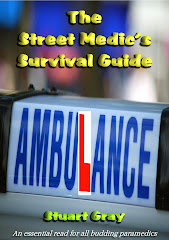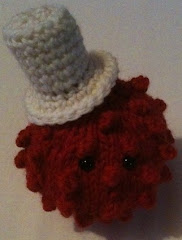Day shift: Eight calls; two by car; one treated on scene; five by ambulance.
Stats: 1 Hypothermic; 1 Viral infection; 1 Cyst in foot; 2 Head injuries; 1 Burns; 1 RTA with leg & neck pain; 1 Cut hand.
As I drove across Waterloo Bridge this morning I saw a large drift of black smoke, somewhere in the east of London, where a fire was, or had been burning. I wondered if any of our crews had been sent to it.
Almost immediately into the shift we were tasked with recovering a drunken male who’d been found asleep outside a tube station. He had been waiting for it to open so that he could go home but I think he’d been there all night because when his temperature was checked it read 33c. He was with the police and was refusing any help but underground staff wouldn’t let him travel in his current condition, so the only thing for it was to take him to hospital and after a bit of a debate, he agreed. He was quiet and good natured, so it was a routine trip and another life saved with no effort
Same again later on when we were sent to a 19 year-old supposedly ‘fitting’ at a hostel for foreign visitors. He wasn’t fitting and never had been – he had a viral infection and a sore throat. His raised temperature could go with him to the local GP or walk-in centre because, if we could possibly avoid it, he wasn’t going to a busy hospital with ill people in it. An ambulance arrived obviously (before I could cancel it), so I left the ultimate decision with the crew.
A special assignment next for a high-ranking foreign diplomat who had a cyst on his foot. All he needed was a dressing on it – it had already been partially drained by a doctor. We were ushered into a posh hotel and up to the Presidential Suite floor by a Diplomatic Protection Officer. The treatment process took no more than a few minutes to complete but the security surrounding him was such that it took almost 30 minutes to get to him and be shown back out via back lifts and cellar areas. We were, for the time we were on scene, the secret agents of the ambulance service.
The next job was interesting too – an employee of the Inland Revenue fell down concrete steps and cracked her head open. She’d been laying on the cold floor, bleeding into a dressing applied by the first aider for 20 minutes before we arrived (ambulance shortage at the time). She hadn’t been knocked unconscious but as soon as I lifted the dressing to peer at the wound a line of arterial blood squirted across my glove. She had severed her Temporal Artery. I immediately applied pressure and placed another dressing on to the site as quickly as possible – this was tricky considering she was a potential neck injury and her fine, long hair (matted in blood) made the task awkward. When it was done, we moved her (with the help of lots of hands) carefully into a better position for a collar and awaited the ambulance crew – then she was immobilised and lifted out to the ambulance.
Before I could get anything to eat (but luckily managed to go to the loo) we got a call for a 17 year-old chef at a high-brow restaurant who’d burned his face with hot oil. The stuff reaches 200c I was told and as soon as I saw him I realised how lucky he’d been. His entire face was scalded – he had partial thickness burns from his scalp to his chin. He’d also burned his hands and shoulder and one of his ears but these were less severe and only superficial - like a bad sunburn without blisters. In total he had around 20 – 25% burns to his body. He’d been smart enough to douse his face in cold water for almost ten minutes before we arrived and I applied a Watergel mask (which had to be made on the spot). His hands could be dealt with simply enough and I acquired a couple of plastic bags to be tied over the Watergel dressings we’d put on them.
He sucked on Entonox and this helped ease the pain considerably. The crew arrived shortly after we’d settled him down and done all we could to stop the burning process but he will still need specialist treatment at hospital to prevent any permanent scarring to his face.
A RTC that presented us with nothing more than a young man sitting on a wall, waving at us as if we were his taxi, started out as a simple covey in the car to a collar and immobilisation job. His car had been shunted from behind and his leg had been injured (a minor muscle pain) when his seat slid forward. The police weren’t too happy with him because he let the driver who’d hit him go after supplying details. You only do that if you are in a minor vehicle accident with no injuries – otherwise all parties must stay on scene.
He complained of C4 neck pain after fifteen minutes and as I was just about to set off for hospital with him in the car and this, of course, changed the rules. Now we had to have an ambulance and another twenty minutes passed by as we collared him and got him onto a scoop and stretcher for the journey.
A fairly drunken 72 year-old fell off his bar stool and smashed his head on a metal carpet strip, cutting it open above his eye. His friends told us he’d just ‘blacked out’ when he fell, so after his wound had been dressed, his pulse and blood pressure measurements were taken – one was slow and one was low – a combination often seen in heart blocks.
An ambulance arrived and his ECG was taken (I couldn’t do it in the pub now that it was filling with regulars). There was evidence of an AV block – a long P-R interval. This accounted for his bradycardia (averaging at 48bpm) and thus, the low blood pressure... and ultimately his syncope and head injury. Off he went then, for treatment to his head injury and some advice from a doctor about his heart.
We still get 999 calls from people who have fairly minor injuries that could and should walk into A&E for treatment... or a Minor Injuries Unit. I might open up a little treatment centre in the future. It would deal with all those little cuts, bumps and grazes that some individuals believe, hand-on-heart are emergencies. So, the 22 year restaurant worker who sliced open the palm of her hand when a wine glass she was handling shattered, was given an expensive run in the car to hospital, after basic first aid; dressing and elevation sling, was applied. Prior to that, she’d been given a blue plaster and a gauze sheet to wrap her poorly hand up in.
Be safe.
Subscribe to:
Post Comments (Atom)















2 comments:
If the diplomat saw a doctor and had the cyst drained then why hadn't it been dressed as well? Regardless, surely that wasn't worthy of a 999 call.parb
Hi Stuart,
I really enjoy reading your blog and while I have no interest in becoming a paramedic I would like to take this opportunity to say well done to you and all the other paramedics for doing a brilliant job. You turn up for work every day to face the unknown,sometimes there can be heartbreaking incidents for you to deal with and sometimes you are rewarded with great satisfaction knowing you have saved someones life. However there are also the time wasters and people who call 999 for minor injuries such as a small cut to the hand from a glass. It takes a lot of courage and quite a strong stomach to do what you do because I for one certainly couldn't do it. Keep up the good work and stay safe!
Carolyn
Post a Comment